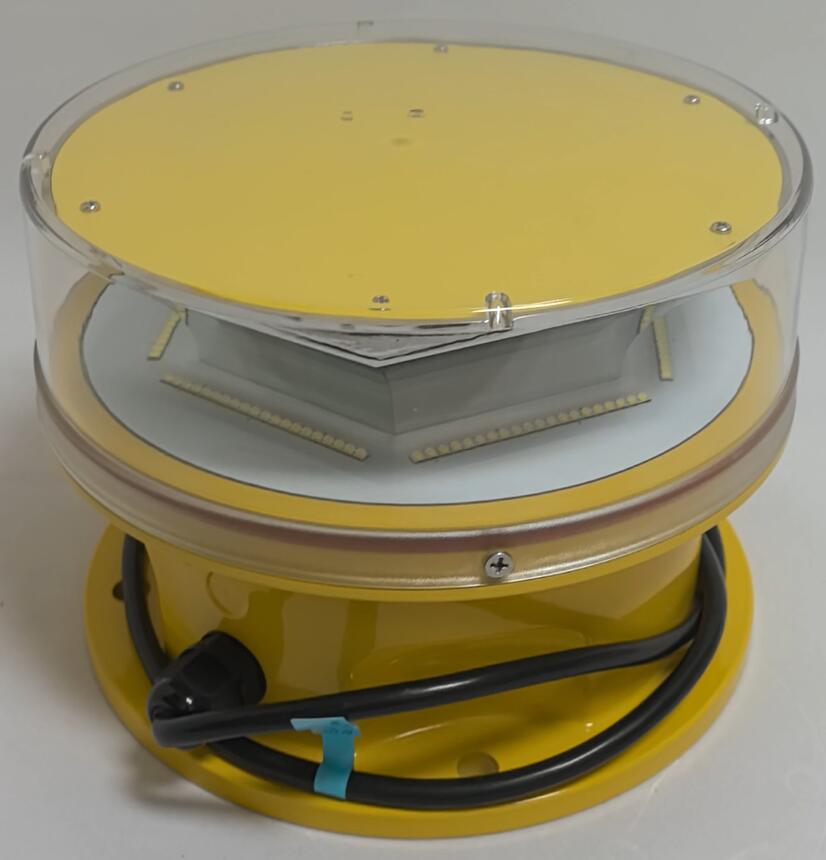Medium Intensity Obstruction Lights: Ensuring Safety in Modern Aviation
In the ever-evolving world of aviation, safety remains a paramount concern. Among the myriad of safety measures, medium intensity obstruction lights (MIOLs) play a crucial role in preventing collisions and ensuring the safe passage of aircraft. These lights, often mounted on tall structures such as towers, buildings, and wind turbines, serve as visual warnings to pilots, especially during nighttime or low-visibility conditions. This article delves into the significance, functionality, and advancements in medium intensity obstruction lights, highlighting their indispensable role in modern aviation.
The Importance of Medium Intensity Obstruction Lights
Medium intensity obstruction lights are designed to alert pilots to the presence of structures that could pose a hazard to aircraft. These lights are typically used on structures that are between 200 and 500 feet in height, although their application can vary depending on local regulations and the specific environment. The primary purpose of MIOLs is to enhance the visibility of obstacles, thereby reducing the risk of collisions.
The aviation industry operates around the clock, and with the increasing number of flights, the airspace has become more congested. This congestion, coupled with the proliferation of tall structures in urban and rural areas, necessitates robust safety measures. Medium intensity obstruction lights provide a reliable solution by ensuring that these structures are clearly visible to pilots, even from a distance.

How Medium Intensity Obstruction Lights Work
Medium intensity obstruction lights are characterized by their brightness and color. They typically emit a red or white light, with the choice of color depending on the specific requirements of the location and the regulations governing aviation safety. The lights are designed to be visible from a distance of several miles, ensuring that pilots have ample time to adjust their flight path if necessary.
One of the key features of MIOLs is their ability to operate at different intensities. During the day, when visibility is generally good, the lights may operate at a lower intensity. However, as visibility decreases, such as during dusk, dawn, or adverse weather conditions, the lights automatically increase their intensity to ensure maximum visibility. This adaptive functionality is crucial in maintaining safety across varying conditions.
Advancements in Medium Intensity Obstruction Lights
Over the years, there have been significant advancements in the technology behind medium intensity obstruction lights. Modern MIOLs are equipped with LED (light-emitting diode) technology, which offers several advantages over traditional incandescent lights. LEDs are more energy-efficient, have a longer lifespan, and provide a more consistent light output. These benefits not only reduce maintenance costs but also enhance the reliability of the lights.
Another notable advancement is the integration of smart technology into MIOLs. Some modern systems are equipped with sensors and communication capabilities that allow them to transmit real-time data about their status. This data can be monitored remotely, enabling prompt maintenance and reducing the risk of light failure. Additionally, some MIOLs are now equipped with solar panels, making them more environmentally friendly and reducing their reliance on external power sources.
Regulatory Standards and Compliance
The installation and operation of medium intensity obstruction lights are governed by strict regulatory standards. These standards are set by aviation authorities such as the International Civil Aviation Organization (ICAO) and the Federal Aviation Administration (FAA). Compliance with these standards is mandatory to ensure the safety of air traffic.
Regulations typically specify the required intensity, color, and flash rate of the lights, as well as their placement on the structure. For example, the FAA mandates that medium intensity obstruction lights on structures over 200 feet in height must be visible from at least 3 nautical miles during the day and 20 nautical miles at night. These stringent requirements ensure that the lights are effective in all conditions.
Challenges and Future Directions
Despite their effectiveness, medium intensity obstruction lights are not without challenges. One of the primary concerns is light pollution, which can affect both human populations and wildlife. To address this issue, manufacturers are developing lights with reduced glare and more focused beams, minimizing their impact on the surrounding environment.
| Medium intensity obstruction lights |
Another challenge is the need for continuous innovation to keep pace with the evolving aviation industry. As aircraft become more advanced and air traffic increases, the demand for more sophisticated obstruction lighting systems will grow. Future developments may include the use of advanced materials, improved energy efficiency, and enhanced integration with other aviation safety systems.
Medium intensity obstruction lights are a vital component of aviation safety, providing essential visual warnings to pilots and helping to prevent collisions with tall structures. With advancements in technology and a focus on regulatory compliance, these lights continue to evolve, offering greater reliability and efficiency. As the aviation industry grows, the role of medium intensity obstruction lights will become even more critical, ensuring the safety of air traffic in an increasingly complex airspace.
In conclusion, medium intensity obstruction lights are not just a regulatory requirement; they are a testament to the aviation industry's commitment to safety. By continuously improving these systems, we can ensure that the skies remain safe for all who travel through them.
